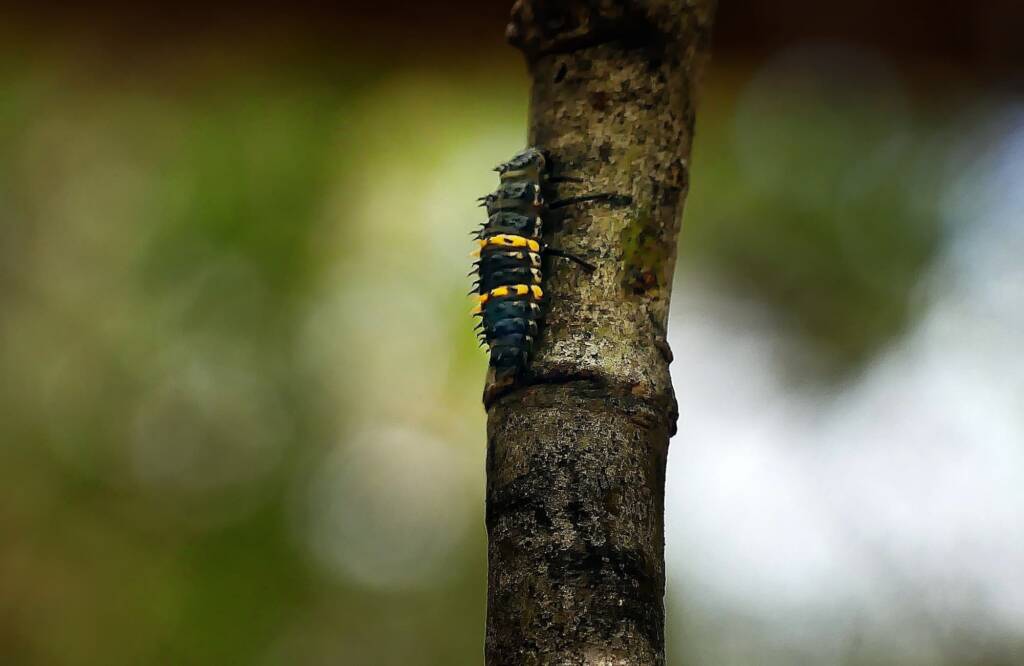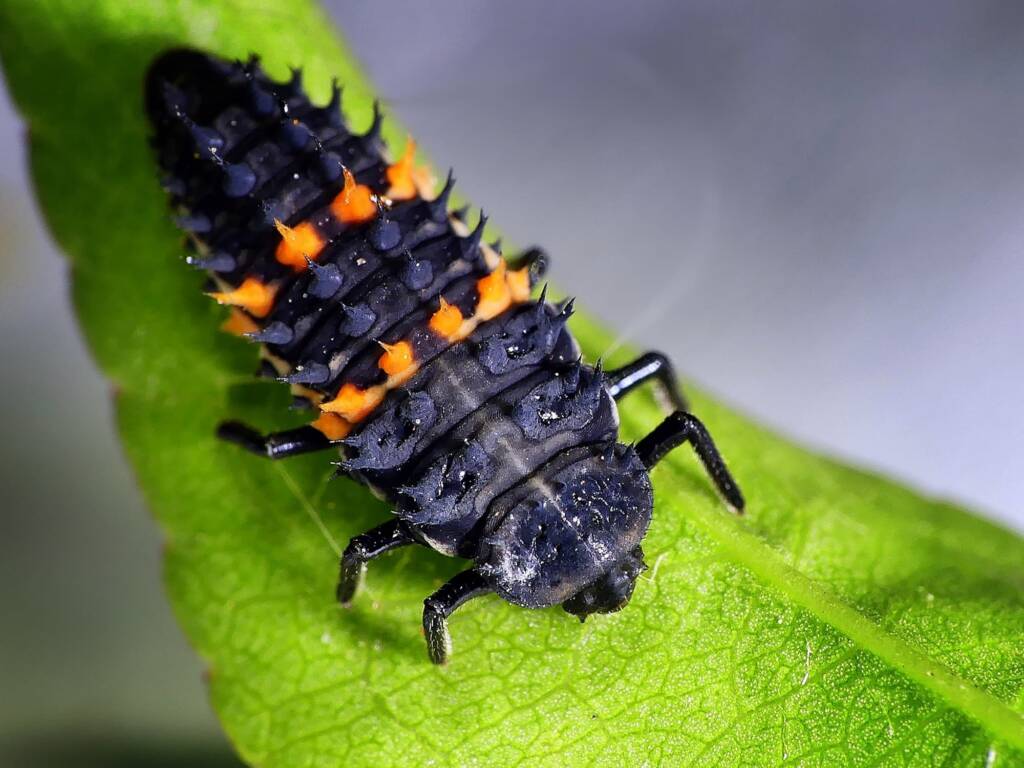Ladybirds (Beetles)Australoneda bourgeoisi Coccinella transversalis Harmonia conformis Olla v-nigrum Orcus australasiae
Harmonia conformis (known as the Large Spotted Ladybird), is a species of ladybird in the family Coccinellidae. They are large in appearance, approximately 6-7 mm long. They are also known as the Common Spotted Ladybird.
The Large Spotted Ladybird is a light orange-red colour in appearance, that include 20 large black spots, 18 of these spots are on the elytra (wing covers). Some references say there are 23 black dots on its wing casings (and is sometimes mistaken for a 26 or 28 spotted lady beetle). The area behind the head of Harmonia conformis (the pronotum) has a distinct pattern.

Like all ladybirds, the Harmonia conformis undergo a complete metamorphosis with four discrete life stages of egg, larva, pupa and adult beetle.
The eggs are between 0.2 to 2.0 mm long and yellowish in colour, oval to spindle-shaped. They are laid singly or in small to large batches and always with the long axis perpendicular to the substrate. When freshly laid, the eggs are usually white or creamy-yellow, but during embryogenesis (the development process by which a fertilized egg develops into an embryo) it changes colour, becoming darker. This stage occurs over 2 to 18 days.

There are fours stage (instar) in the larval life, with each stage being separated by a moulting period in which the larva casts off its old exoskeleton. The larvae are completely black when they first hatch. After the 2nd instar they develop two yellow bands round their bodies.
After the fourth instar, the larva stops feeding and attaches itself using anal pad (cremaster) to the substrate (leaf / stem). During this period which can last several hours, it will moult, transforming into a pupa. This pupal stage lasts about 7-14 days, after which the adult ladybird beetle will emerge.


- Scientific classification
- Kingdom: Animalia
- Phylum: Arthropoda
- Subphylum: Hexapoda
- Class: Insecta
- Subclass: Pterygota
- Order: Coleoptera
- Suborder: Polyphaga
- Infraorder: Cucujiformia
- Superfamily: Coccinelloidea
- Family: Coccinellidae
- Subfamily: Coccinellinae
- Tribe: Coccinellini
- Genus: Harmonia
- Species: Harmonia conformis
Footnote & References
- Photographs © Marianne Broug, Marianne Broug photography, https://www.mariannebrougphotography.com/
- Large Spotted Ladybird (Harmonia conformis), mariannebroug, iNaturalistAU, https://inaturalist.ala.org.au/observations?map&user_id=mariannebroug&taxon_id=210509
- Harmonia conformis (Boisduval, 1835), Atlas of Living Australia, https://bie.ala.org.au/species/https://biodiversity.org.au/afd/taxa/7de2660b-e39a-4c85-9512-bec18c5f82fc
- Large Spotted Ladybird (Harmonia conformis), iNaturalistAU, https://inaturalist.ala.org.au/taxa/210509-Harmonia-conformis
- About Ladybirds, Ladybirds of Australia Web Site, authors Adam Slipinski, Anne Hastings, Ben Boyd, CSIRO, https://www.ento.csiro.au/biology/ladybirds/aboutLadybirds2.htm



